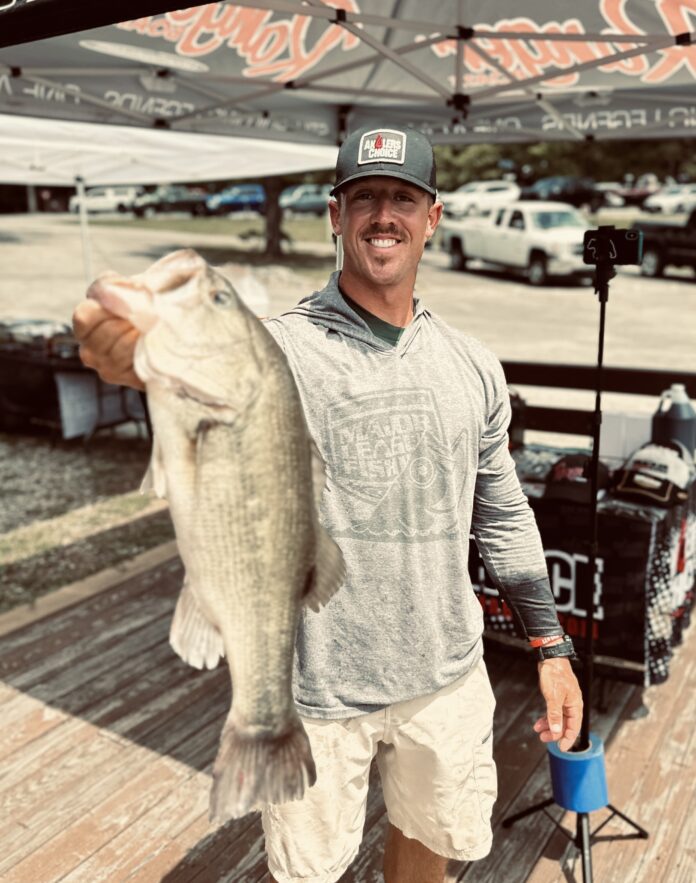Mastering Summertime Bass Fishing: Techniques to Catch Giant Bass
When the summer sun peaks and temperatures soar, both humans and fish tend to enter a slower pace. Just as we find ourselves craving shade and cold beverages, bass alter their behavior to cope with the heat. While it might be tempting to think that bass completely stop biting during these scorching months, the reality is a bit more nuanced. With some extra effort and the right techniques, you can still reel in some giant bass. Let’s dive into some tips and techniques to make the most out of your summertime bass fishing adventures.
Understanding Summertime Bass Behavior
Before we delve into specific techniques, it’s crucial to understand how bass behave in the summer:
1. Seeking Cooler Waters: As water temperatures rise, bass actively look for cooler, more oxygen-rich environments. These include deeper waters, shaded areas, and places with abundant vegetation or current.
2. Prime Feeding Times: Bass are most active during the cooler parts of the day, particularly early morning and late evening. These windows are ideal for fishing.
3. Adjusted Diet: In warmer temperatures, bass metabolism slows down slightly. They might prefer slower-moving prey or lures that closely mimic their natural diet.
Essential Gear and Setup
To maximize your chances of success, having the right gear is paramount:
1. Rod and Reel: Opt for a medium-heavy rod paired with a high-speed reel. This setup offers the versatility needed for various techniques you’ll employ.
2. Line: A combination of braided line and fluorocarbon leader provides the strength and invisibility you need.
3. Terminal Tackle: Stock up on a variety of hooks, sinkers, and swivels to tailor your setup to different lures and conditions.
Key Techniques for Summertime Bass Fishing
1. Drop Shot Rig
The drop shot rig is a finesse technique perfect for targeting bass in deep waters or around structure. It consists of a small hook tied above a weight, allowing your bait to hover just above the bottom.
– Bait Choice: Use straight-tail worms or small minnows. These mimic natural prey and are effective in enticing sluggish bass.
– Technique: Drop your rig to the bottom, then gently twitch it to make the bait appear as if it’s alive. Maintain slight tension on the line to detect subtle bites.
2. Topwater Frog
Topwater fishing with hollow-body frogs can be incredibly exhilarating. This method is especially effective in the early morning and late evening when bass are feeding near the surface.
– Bait Choice: Use distinct styles like pointed-nose frogs for thick cover and popping frogs for open water.
– Technique: Cast near weed beds, lily pads, or other vegetation. Work your frog with a walk-the-dog action, pausing occasionally to mimic a live frog. Remember to hesitate slightly before setting the hook when a bass strikes.
3. Wobble Head Jig
The wobble head jig, paired with a creature bait, is an excellent alternative to crankbaits and spinnerbaits. This lure’s free-moving head gives it a natural, erratic action that bass find irresistible.
– Bait Choice: Use creature baits that mimic bluegill or crawfish. The Missile Baits D Bomb is a popular choice due to its lifelike action.
– Technique: Cast out and let it sink to the bottom. Employ a slow, steady retrieve, ensuring the jig bumps into rocks, logs, and other underwater structures. Pause occasionally to let the lure settle, tempting bass to strike.
4. Deep-Diving Crankbaits
When bass retreat to deeper waters, deep-diving crankbaits become essential. These lures can cover a lot of water quickly, making them great for locating schools of bass.
– Bait Choice: Use crankbaits like the Strike King 3XD or 5XD that dive to 10-15 feet. Choose natural colors that mimic shad or other local forage.
– Technique: Cast as far as possible and retrieve at a moderate pace, ensuring the crankbait touches the bottom. The goal is to create a commotion that attracts bass lurking in deeper waters.
5. Flutter Spoon
Fishing a flutter spoon is an excellent technique for targeting bass on offshore structure like humps, points, and ledges. This method can produce explosive strikes from large bass.
– Bait Choice: Choose flutter spoons ranging from 3 to 6 inches. Sixth Sense’s Magnum Spoon is a reliable option.
– Technique: Cast the spoon and let it sink to the bottom. Use a popping action to lift the spoon off the bottom and let it flutter back down. This mimics the erratic movements of a dying baitfish, triggering aggressive strikes.
Advanced Tips for Summertime Success
– Follow the Wind: Wind can play a significant role in locating bass. Wind-blown points and pockets often concentrate baitfish, attracting bass. Pay attention to wind direction and fish accordingly.
– Utilize Electronics: If kayaking or boating, use fish finders and depth finders to locate structure and schools of fish. This information can guide your lure choices and fishing locations.
– Stay Hydrated and Safe: Summertime fishing can expose you to harsh sun and heat for prolonged periods. Wear sunscreen, hats, and polarized sunglasses. Stay hydrated and take breaks as needed to ensure a safe and enjoyable experience.
In Conclusion
Fishing for bass in the summertime can be challenging, but with the right techniques and a bit of persistence, you can still have a very successful outing. Understanding bass behavior, employing a variety of presentations, and making adjustments based on conditions will significantly increase your chances of catching those giant bass. As always, practice catch and release to ensure that these incredible fish are around for future generations to enjoy.
So, gear up, get out there in the early mornings or late evenings, and use these strategies to your advantage. Summertime bass fishing might take a little more effort, but the reward of catching a giant bass makes it all worthwhile. Tight lines and happy fishing!

